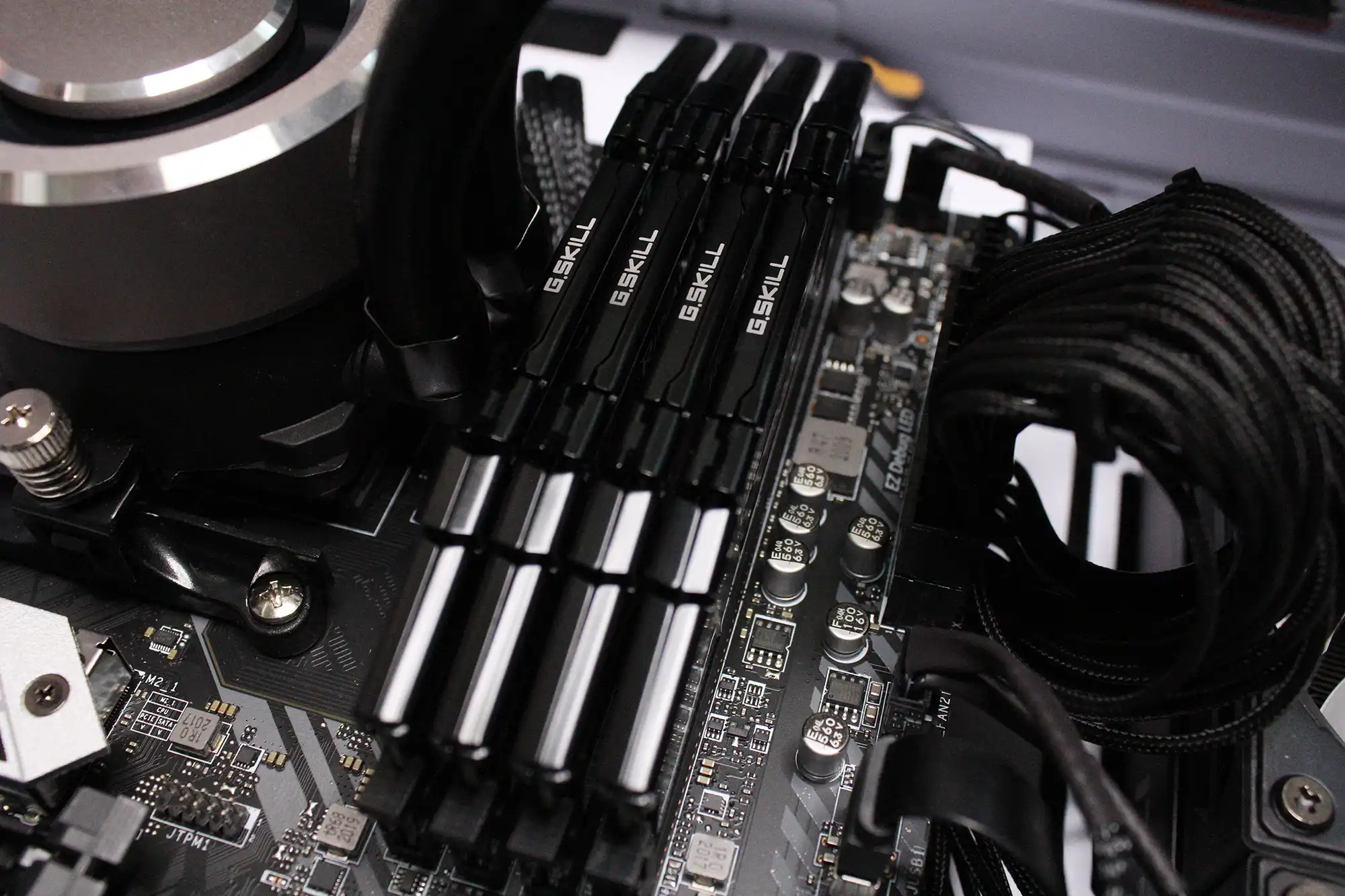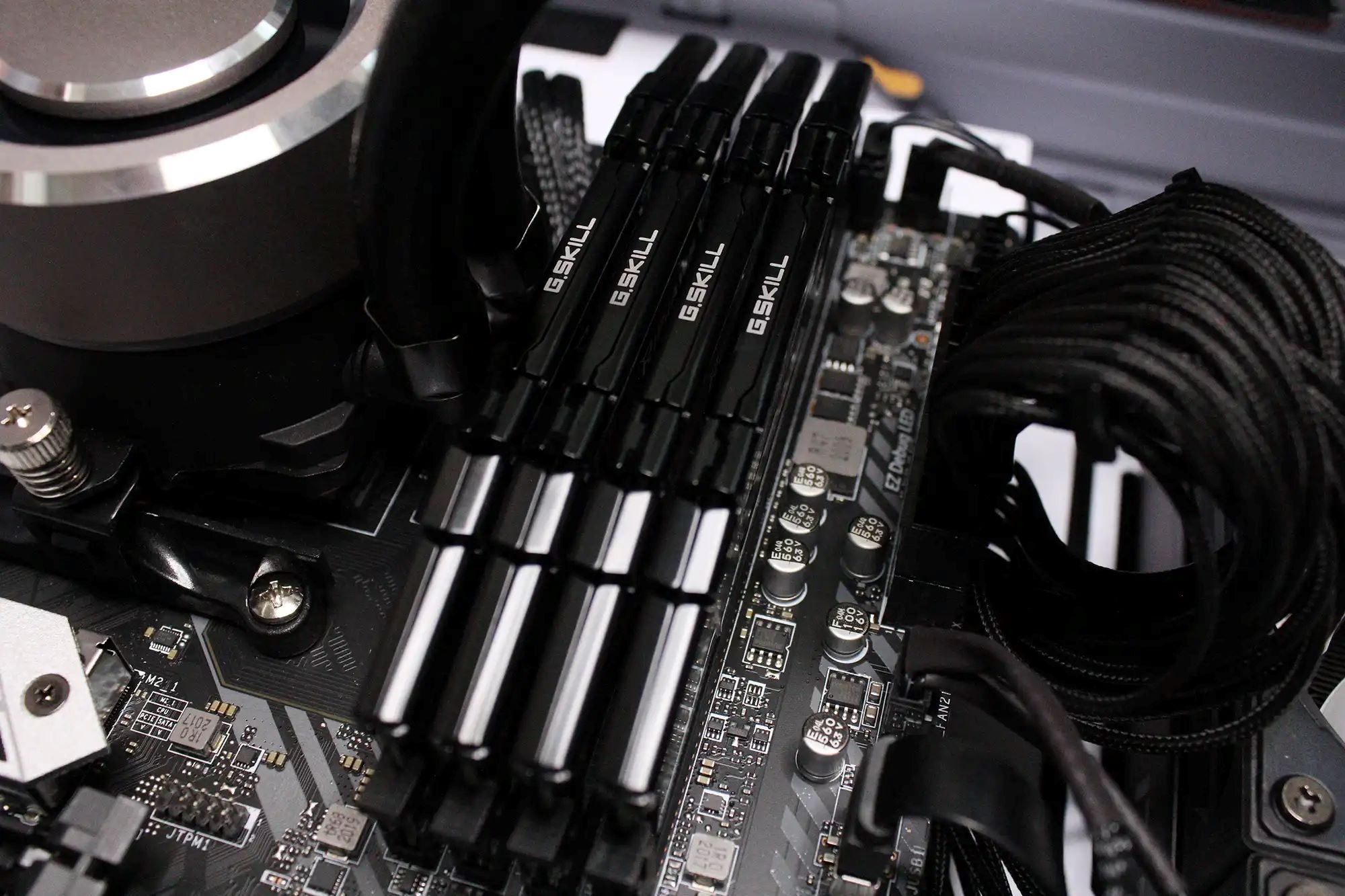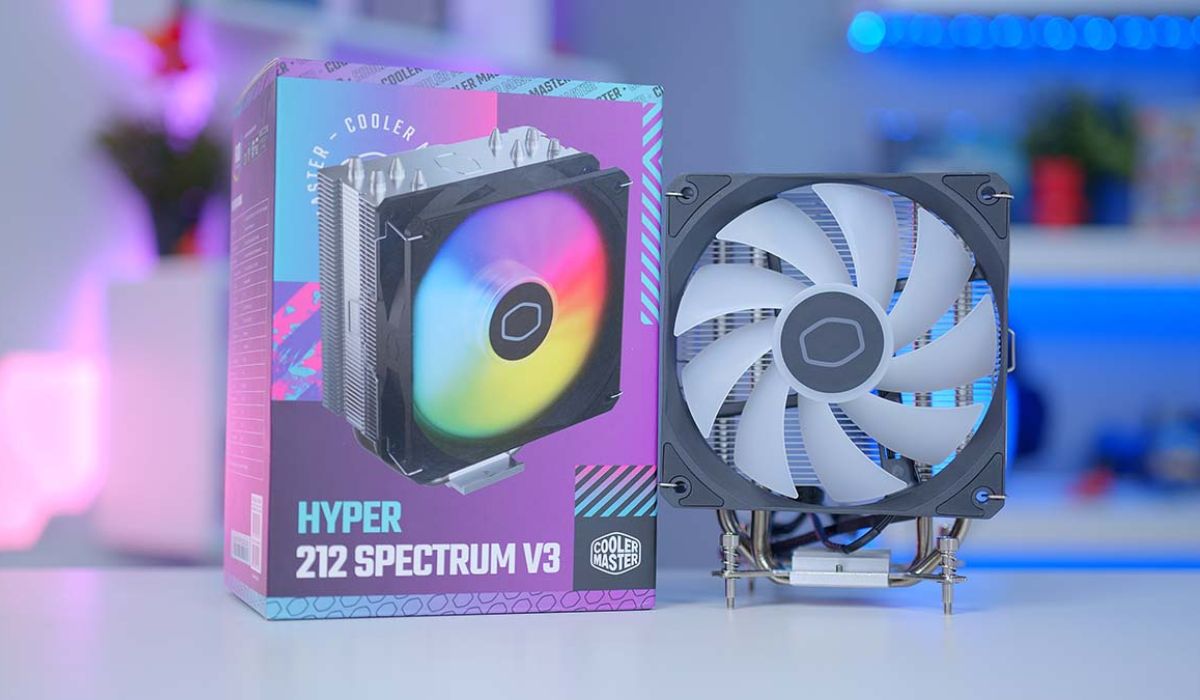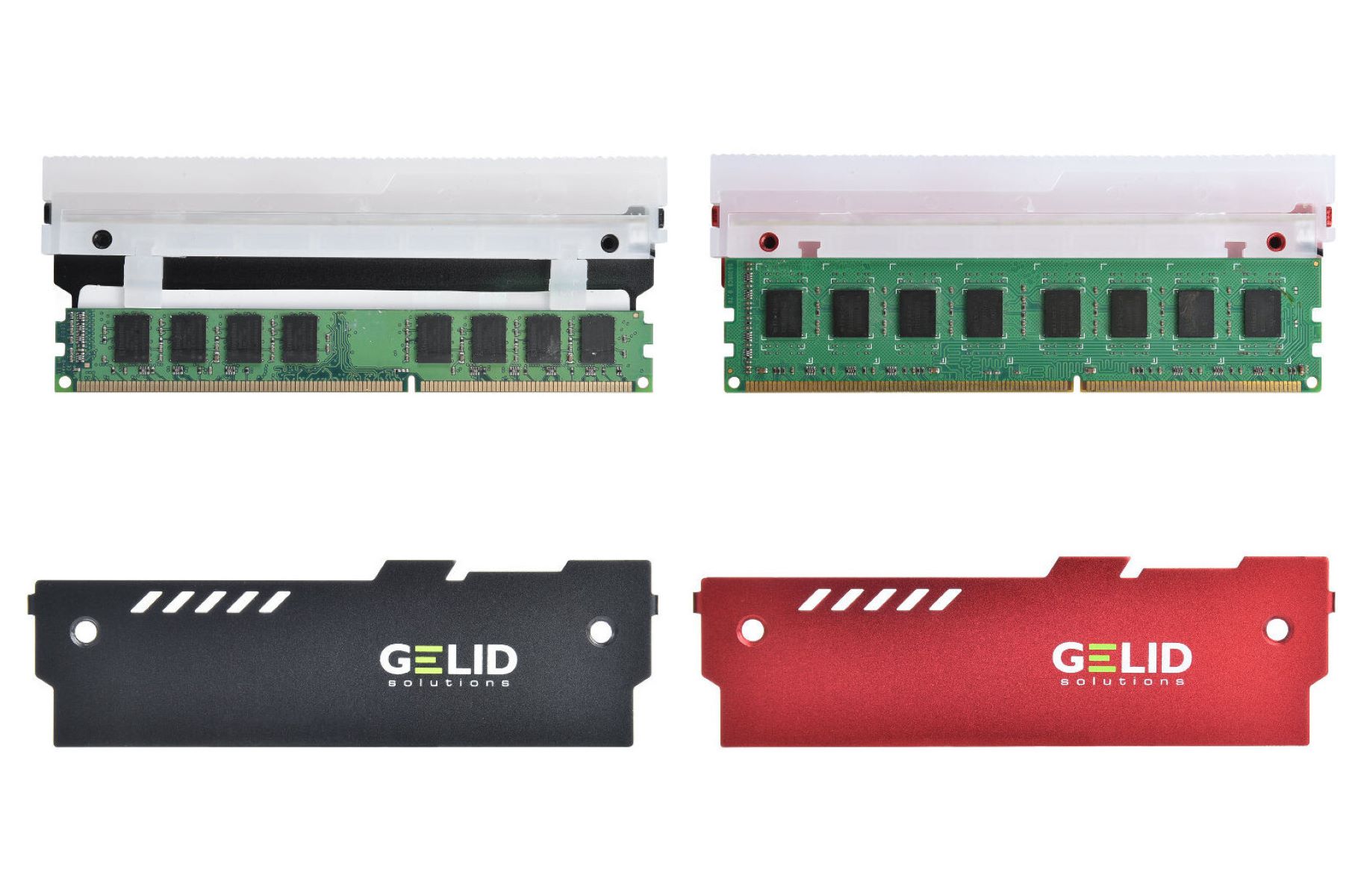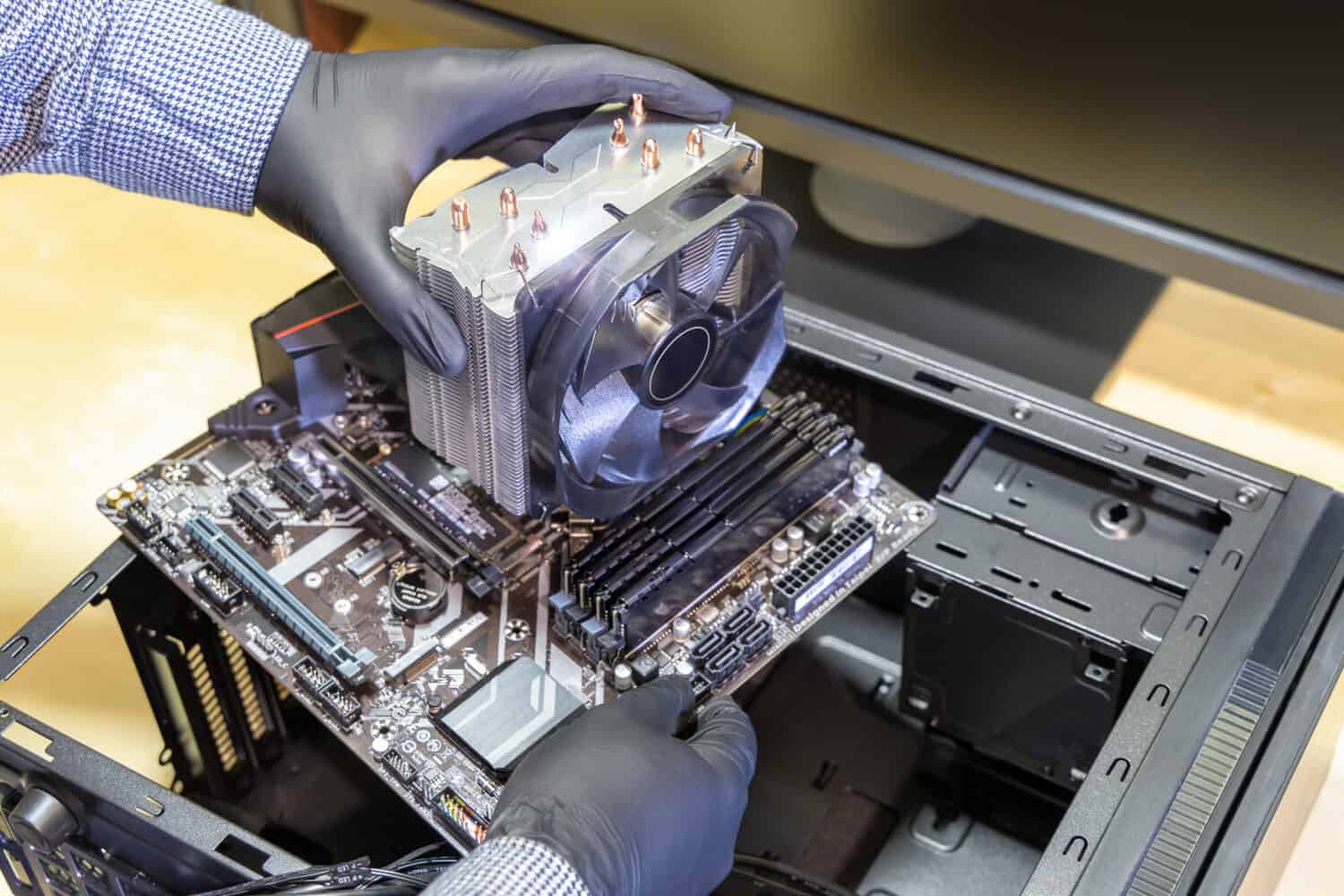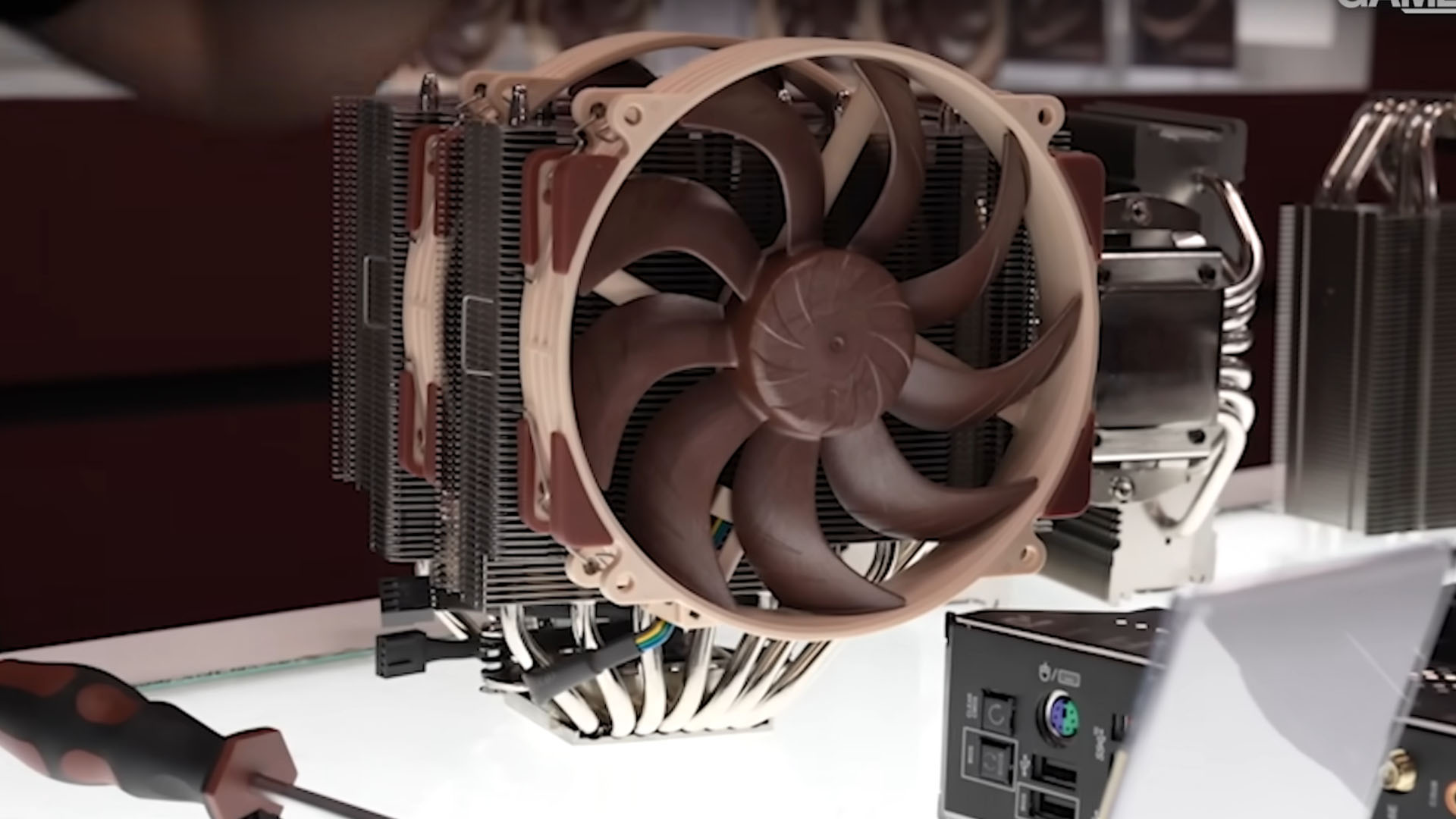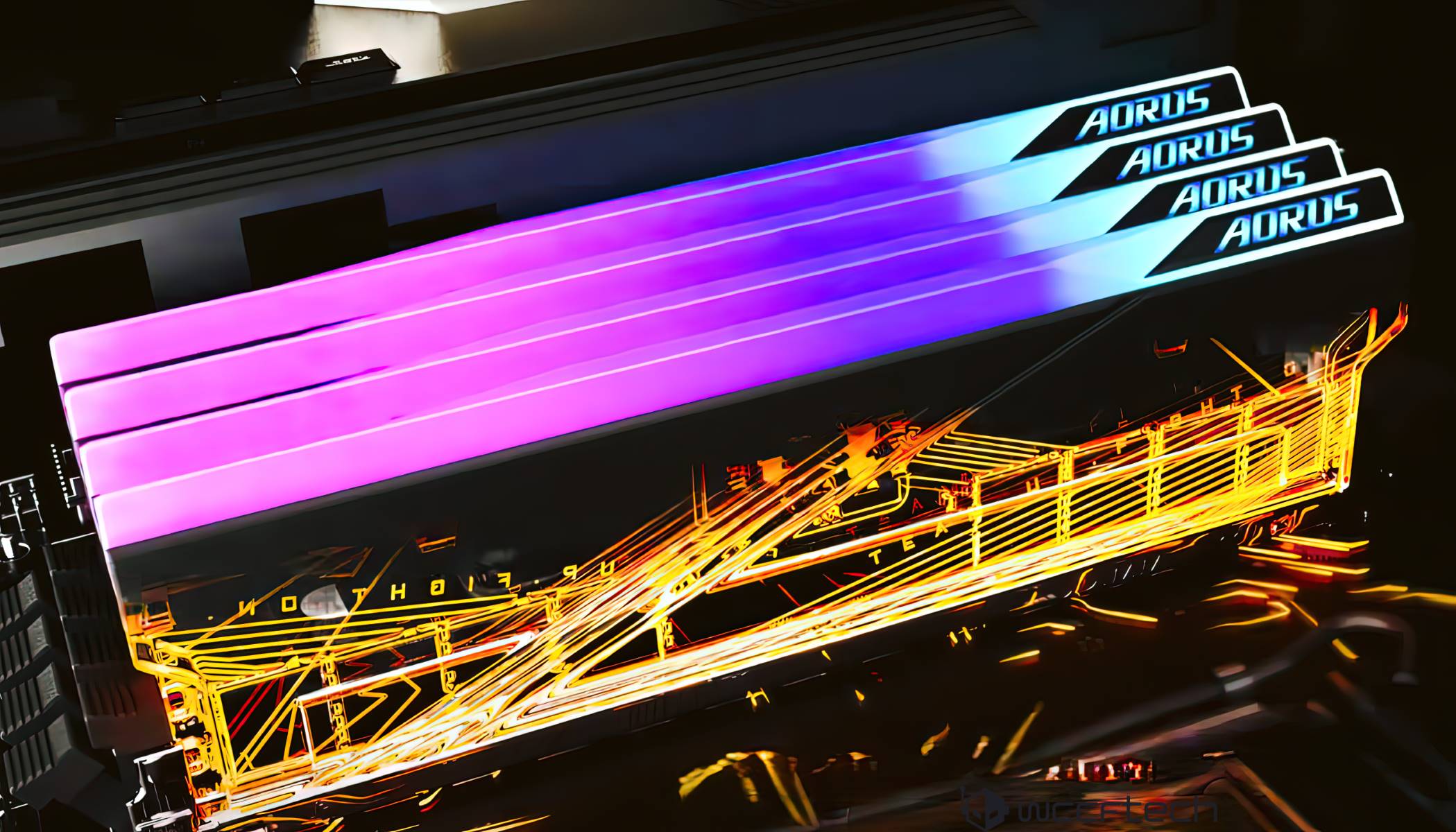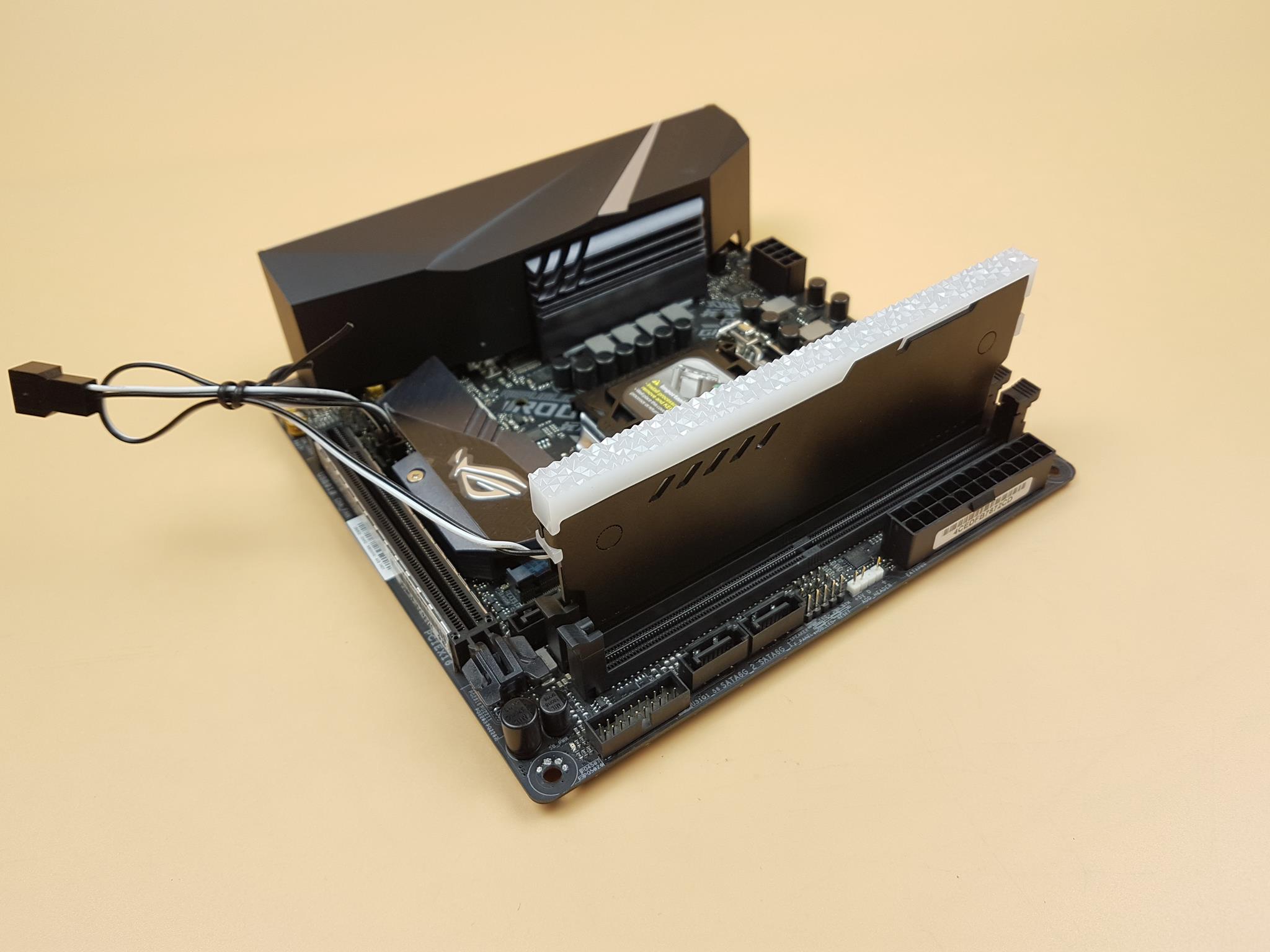Introduction
When it comes to computer hardware, one component that often gets overlooked is RAM (Random Access Memory). RAM plays a crucial role in the overall performance of a computer system, allowing for quick access to data and programs. However, with the increasing demands placed on RAM, it is not uncommon for it to generate heat during operation. This heat can affect its performance and longevity if not properly addressed. To combat this issue, RAM heatsinks have become a popular solution to dissipate the heat and ensure optimal performance.
In this article, we will explore why RAM generates heat, the importance of heat dissipation, and the benefits of using RAM heatsinks. We will also delve into the different types of heatsinks available and provide a step-by-step guide for DIY installation. So, whether you’re a computer enthusiast looking to improve your system’s performance or someone curious about the intricacies of computer hardware, read on to discover why RAM heatsinks are an essential component.
What is RAM and what does it do?
RAM, or Random Access Memory, is a crucial component of a computer’s memory hierarchy. It serves as a temporary storage for data that is actively being used by the computer’s processor. Think of RAM as a workbench where the processor can quickly access and manipulate data, allowing for smooth and efficient execution of tasks.
Unlike a computer’s primary storage, such as a hard drive or solid-state drive, RAM is volatile, meaning it loses its data when power is turned off. This characteristic makes RAM ideal for storing and accessing data that needs to be constantly updated. For example, when you open a web browser or run a program, the relevant files are loaded into RAM for quick access.
The speed and capacity of RAM directly impact the overall performance of a computer. A larger RAM capacity allows for more data to be stored and accessed simultaneously, improving multitasking capabilities. Additionally, faster RAM modules enable quicker data retrieval, resulting in faster program execution and better overall system responsiveness.
In summary, RAM serves as a high-speed temporary storage for actively used data, allowing the processor to quickly access and manipulate information. Its capacity and speed play a crucial role in determining the performance and efficiency of a computer system.
Why does RAM generate heat?
RAM generates heat during operation due to the electrical current flowing through the memory modules. As data is transferred between the RAM and the processor, the electronic components on the RAM modules are constantly working, causing resistance to the flow of current. This resistance leads to the generation of heat as a byproduct.
The amount of heat generated by RAM depends on various factors such as the type of RAM, the speed at which it operates, and the intensity of the data processing tasks being performed. For instance, high-speed DDR4 RAM modules tend to generate more heat compared to their slower counterparts.
RAM heat generation is also influenced by factors like voltage, overclocking, and the ambient temperature of the computer’s surroundings. When RAM is supplied with higher voltage or pushed beyond its recommended specifications through overclocking, it tends to generate more heat. Similarly, if the computer operates in a warm environment or lacks proper ventilation, it can exacerbate the heat accumulation on the RAM modules.
It’s worth noting that excessive heat can have adverse effects on RAM performance and longevity. As the temperature rises, the electrical resistance within the RAM modules can increase, leading to potential instability and errors. Over time, prolonged exposure to high temperatures can degrade the reliability and lifespan of the RAM chips. Therefore, efficient heat dissipation is essential to maintain optimal performance and ensure the longevity of the RAM modules.
The importance of heat dissipation
Heat dissipation is crucial when it comes to maintaining the stability and longevity of computer components, including RAM. Excessive heat can lead to thermal throttling, where the system reduces the performance of the overheated component to prevent further damage. This can result in decreased performance and slower overall system operation.
In the case of RAM, high temperatures can cause disruptions in data transmission, leading to errors and system crashes. These issues can result in data loss, corrupted files, and even system instability. Additionally, the increased heat can accelerate the degradation of the RAM modules, shortening their lifespan and potentially rendering them unusable over time.
Efficient heat dissipation is also important for maintaining consistent and reliable performance. As the temperature of the RAM modules rises, their operating speed may be automatically reduced to prevent overheating. This reduction in speed, known as downclocking, can negatively impact the overall system performance, resulting in slower execution of tasks and diminished user experience.
Furthermore, excessive heat can also impact the performance of other nearby components, such as the CPU and graphics card. Heat buildup within the computer case can create a hostile environment for these components, causing them to operate at higher temperatures and potentially leading to performance degradation or even hardware failure.
By implementing effective heat dissipation methods, such as RAM heatsinks, the temperature of the RAM modules can be kept at optimal levels. This not only improves stability and reduces the likelihood of errors but also helps to maintain the performance and lifespan of the RAM. Adequate heat dissipation ensures that the computer system operates at its best, delivering smooth and efficient performance for various tasks and applications.
Understanding RAM heatsinks
RAM heatsinks are specialized cooling solutions designed to dissipate the heat generated by RAM modules during operation. They typically consist of a metal heat sink that attaches to the RAM modules to draw heat away from the memory chips and a thermal interface material (TIM) that enhances heat transfer between the memory modules and the heatsink.
The primary function of RAM heatsinks is to increase the surface area available for heat dissipation. The metal fins or ridges on the heatsink provide larger contact areas, allowing for more efficient heat transfer to the surrounding air. This helps to prevent the temperature of the RAM modules from reaching critical levels and ensures reliable and stable performance.
RAM heatsinks are usually made of aluminum or copper due to their excellent thermal conductivity properties. Aluminum heatsinks are lightweight, affordable, and provide sufficient cooling for most RAM modules. On the other hand, copper heatsinks offer even better heat conductivity, making them ideal for high-performance RAM or systems that are overclocked.
In addition to providing heat dissipation, RAM heatsinks also offer several other benefits. They can help to improve the overall aesthetics of a computer system, giving it a sleek and professional appearance. Many RAM heatsinks feature stylish designs and LED lighting options that allow users to customize their system’s look.
Furthermore, RAM heatsinks can contribute to reduced noise levels. When RAM modules run cooler, they are less likely to activate fans or other cooling solutions to compensate for the increased temperature. This can lead to a quieter system, providing a more pleasant computing experience.
It’s important to note that not all RAM modules come with pre-installed heatsinks. Generally, high-performance RAM modules, particularly those designed for gaming or overclocking, are more likely to have integrated heatsinks. However, removable heatsinks are also available separately and can be installed on any compatible RAM module.
It’s important to choose RAM heatsinks that are compatible with your RAM modules in terms of size and form factor. Additionally, ensure that proper airflow within the computer case is maintained to maximize the effectiveness of the heatsinks. This can be achieved by using case fans, proper cable management, and positioning RAM modules away from other heat-generating components.
By understanding the purpose and benefits of RAM heatsinks, you can make informed decisions about incorporating them into your computer system. Whether you’re seeking better thermal management, improved aesthetics, or reduced system noise, RAM heatsinks are a valuable addition to optimize the performance and longevity of your RAM modules.
Benefits of RAM heatsinks
RAM heatsinks offer several benefits that contribute to the overall performance and longevity of the RAM modules, as well as the computer system as a whole. Let’s explore some of the key advantages of using RAM heatsinks:
- Thermal management: The primary benefit of RAM heatsinks is their ability to effectively dissipate heat generated by the RAM modules. By drawing heat away from the memory chips and increasing the surface area for heat transfer, heatsinks help keep the temperature of the RAM modules at optimal levels. This reduces the risk of overheating and ensures stable and reliable performance.
- Enhanced system stability: Excessive heat can cause RAM modules to become unstable, leading to system crashes and data loss. RAM heatsinks play a vital role in maintaining the stability of the RAM by preventing temperature-related issues. This is particularly important during demanding tasks like gaming or running resource-intensive applications.
- Improved overclocking capabilities: Overclocking RAM can provide a significant performance boost, but it also increases heat generation. RAM heatsinks can help manage the increased thermal load that comes with overclocking, allowing for higher clock speeds and better system performance without compromising stability.
- Prolonged lifespan: High temperatures can accelerate the degradation of electronic components, including RAM modules. By effectively dissipating heat, RAM heatsinks help extend the lifespan of the RAM chips, ensuring that they can operate reliably for a longer period of time. This is particularly beneficial for users who want to maximize their investment and avoid premature hardware failure.
- Aesthetics and customization: RAM heatsinks come in various designs and styles, allowing users to personalize the look of their computer system. Many heatsinks feature sleek and attractive designs, while others incorporate RGB lighting options. This enables users to create a visually appealing system that matches their preferences and complements the overall aesthetics of their setup.
- Reduced noise levels: When RAM modules become too hot, the computer’s cooling system, such as fans, may need to work harder to maintain optimal temperatures. This can result in increased noise levels. By keeping the RAM modules cool, heatsinks can contribute to a quieter system, providing a more pleasant and peaceful computing environment.
Overall, RAM heatsinks provide crucial benefits that enhance the performance, stability, and lifespan of the RAM modules. From improved thermal management and overclocking capabilities to enhanced aesthetics and reduced noise levels, RAM heatsinks are a valuable addition to any computer system seeking optimized RAM performance and efficient heat dissipation.
The different types of RAM heatsinks
RAM heatsinks come in various designs and styles to cater to different needs and preferences. When considering RAM heatsinks, it is important to understand the different types available. Here are some common types of RAM heatsinks:
- Standard RAM heatsinks: These are the simplest and most common type of heatsinks. They typically consist of a metal heat sink that attaches to the RAM modules using thermal adhesive or clips. Standard heatsinks provide effective heat dissipation and are compatible with a wide range of RAM modules.
- Low-profile heatsinks: Low-profile heatsinks are designed for systems with limited vertical clearance. They have a slim design that minimizes the height of the heatsink, allowing them to fit comfortably in tight spaces. These heatsinks are ideal for small form factor builds and setups with restricted airflow.
- RGB heatsinks: For users who want to add a touch of style and customization to their system, RGB heatsinks are a popular choice. These heatsinks feature integrated RGB lighting that can be customized and synchronized with other RGB components in the system, allowing for stunning lighting effects and personalized aesthetics.
- Modular heatsinks: Modular heatsinks offer the flexibility to adjust the cooling capacity based on specific cooling requirements. They consist of individual heatsinks that can be attached to each RAM module individually. This allows users to cater to the cooling needs of each module, especially when using overclocked or high-performance RAM.
- Active heatsinks: Unlike passive heatsinks, active heatsinks incorporate a small fan or blower to actively pull heat away from the RAM modules. These heatsinks provide additional cooling performance, making them suitable for systems with high ambient temperatures or aggressive overclocking. However, they may generate more noise compared to passive heatsinks.
- Manufacturer-specific heatsinks: Some RAM manufacturers offer their own branded heatsinks that are specifically designed to work with their RAM modules. These heatsinks are often optimized for compatibility and performance with the corresponding RAM modules, ensuring a seamless fit and efficient heat dissipation. They may also provide additional aesthetic customization options.
When selecting a RAM heatsink, it is important to ensure compatibility with your RAM modules. Consider factors such as RAM module height, form factor, and installation method (adhesive or clips) to ensure a proper fit. Additionally, choose heatsinks that match your cooling requirements, aesthetics, and budget.
Whether you prioritize performance, aesthetics, or both, there is a RAM heatsink available to meet your needs. By understanding the different types of RAM heatsinks and their features, you can make an informed decision to enhance the cooling and visual appeal of your computer system.
DIY RAM heatsink installation
Installing a RAM heatsink is a straightforward process that can be done as a do-it-yourself (DIY) project. Follow these steps to install a RAM heatsink on your own:
- Gather the necessary materials: Before starting the installation, make sure you have the RAM heatsink kit, thermal adhesive or clips (depending on the heatsink type), and a clean cloth for preparations.
- Prepare the RAM modules: Start by powering off your computer and removing any peripheral cables. Carefully remove the RAM modules from the motherboard and place them on a clean, static-free surface.
- Clean the RAM modules: Use a clean cloth or alcohol wipe to gently clean the surface of the RAM modules. This helps remove any dust, dirt, or residue that could interfere with the thermal adhesive or thermal transfer.
- Apply the thermal adhesive or install the clips: Depending on the type of heatsink you have, apply a small amount of thermal adhesive to the designated areas on the RAM heatsink or attach the clips to the heatsink as per the manufacturer’s instructions.
- Attach the heatsinks: Carefully align the heatsinks with the RAM modules, ensuring that they are centered and align firmly with the memory chips on the modules. Apply gentle pressure to attach the heatsinks securely to the RAM modules.
- Let it set: If you used thermal adhesive, allow it to set according to the product instructions. This typically involves leaving the RAM modules undisturbed for a specific duration to ensure proper adhesion.
- Reinstall the RAM modules: Once the thermal adhesive has set or the clips are securely in place, carefully reinstall the RAM modules into their respective memory slots on the motherboard. Ensure they are properly seated and locked into place.
- Finish the installation: Reconnect any peripheral cables that were disconnected and reconnect the power to your computer. Power on your computer and verify that the RAM modules are recognized and operating correctly.
It is important to note that RAM heatsink installation may vary slightly depending on the type and brand of heatsink you’re using. Always refer to the manufacturer’s instructions for precise installation steps and specific requirements.
By following these DIY installation steps, you can effectively install RAM heatsinks to improve heat dissipation and enhance the performance and longevity of your RAM modules. However, if you are unsure about the installation process or are uncomfortable handling computer components, it is recommended to seek professional assistance to ensure proper installation and prevent any accidental damage.
Conclusion
RAM heatsinks are a vital component for managing heat generated by RAM modules in a computer system. As RAM modules continue to become faster and more powerful, the need for effective heat dissipation becomes more crucial than ever. By understanding the importance of heat management and the benefits of using RAM heatsinks, computer enthusiasts and casual users alike can optimize their system’s performance and prolong the lifespan of their RAM.
Heat dissipation is key to maintaining stable and reliable performance, preventing system crashes, and reducing the risk of data loss. RAM heatsinks effectively draw heat away from the memory chips, ensuring that the temperature of the modules remains within safe limits. This allows for smooth multitasking, faster data processing, and a more enjoyable computing experience.
Additionally, RAM heatsinks come in a variety of types and styles to suit different needs and preferences. From standard heatsinks to low-profile, RGB, modular, and active heatsinks, users have a range of options to choose from. These heatsinks not only provide thermal management but also add to the aesthetics of the computer system, allowing users to customize the look and feel of their setup.
When installing RAM heatsinks, it is important to follow proper procedures and ensure compatibility with the RAM modules. DIY installation is possible for most users, but seeking professional assistance is recommended if you are unsure or uncomfortable with handling computer components.
In conclusion, RAM heatsinks are an essential component in modern computer systems. They offer effective heat dissipation, enhance system stability and performance, and contribute to the longevity of the RAM modules. By implementing RAM heatsinks, users can ensure that their computers operate at optimal levels, providing reliable and efficient performance for various tasks and applications.







